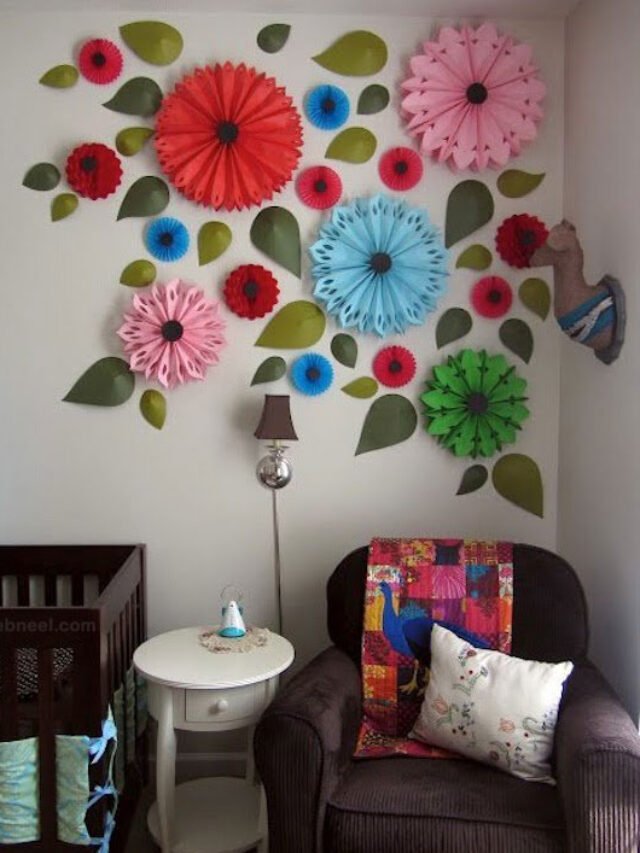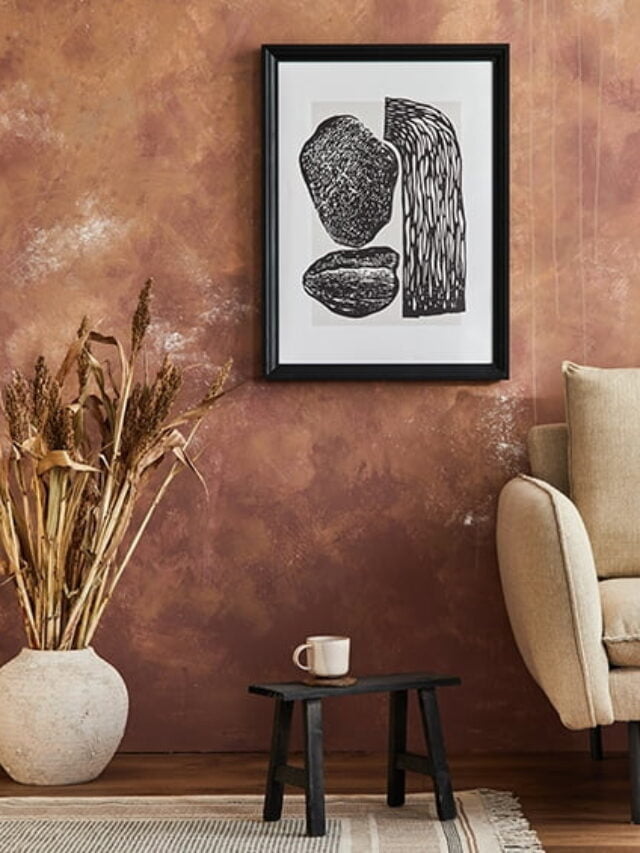Quilling Art, It is an art form to quill. It is thought to have begun with the development of paper in either China or Egypt in the year 105 AD. When wire shapes matching contemporary quill were discovered in several tombs.
Today, we’ll discuss quill and how to utilize it, as well as how to use Quilling to beautify your home.
Quilling Art
- What Is Quilling Art
Quilling, also known as paper filigree, is an art form that involves rolling, shaping, and gluing thin strips of paper to create intricate and decorative designs. The technique of quill dates back to the Renaissance period when it was used to decorate religious items and books.
An artist coils and shapes thin strips of paper, often produced from colored or patterned paper, using specialized equipment to create quilled artwork. After being placed and adhered together, the coils and forms can be used to create a variety of motifs, including floral patterns, fauna, landscapes, abstract designs, and more.
Quilling’s versatility and capacity to produce fine details from basic materials are what make it so appealing. quill artists have a vast array of shapes, sizes, and color options at their disposal to produce beautiful and delicate works of art. The art form has changed throughout the years, but it is still valued and used by artists and craftspeople all over the world today. Quilled artwork can be displayed as wall art, used to make jewelry, greeting cards, home decor, and a variety of other creative products.

Discover the captivating art of quilling. Learn the techniques and tools needed to create stunning quilled designs. Explore a variety of quill patterns and projects to inspire your creativity. Start your quilling journey today and bring beauty to life with this timeless art form.
History Of Quilling
The origins of quilling are not recorded, but some think it began with the invention of paper, in China in 105 AD or in Egypt, where some tombs have been found to contain wire shapes similar in appearance to modern quill.
It is believed that in the 300s and 400s, silver and gold wires were quilled around pillars and vases, and jewelry made using this technique. Quilling was practised by Greeks who used thin metal wires to decorate containers and boxes. The earliest works ever were from the medieval period. Also they were found in religious houses across Europe.
Greeks engaged in quill , using fine metal wire to embellish jars and boxes. The earliest writings discovered so far are from the Middle Ages.
Additionally, they were discovered in ecclesiastical buildings all around Europe. Metal filigree was widely employed as adornment in the 13th century.
However, paper was employed as a replacement when the customary material became scarce and out of reach for the average person.
Today, quill is seeing a resurgence in popularity. It is sometimes used for decorating wedding invitations, for Christmas, birth announcements, greeting cards, scrapbook pages, and boxes. Quilling can be found in art galleries in Europe and in the United States, and is an art that is practiced around the world.


Many examples of quilled art can be found on cabinets and stands, cribbage boards, ladies’ purses, a wide range of both pictures and frames, work baskets, tea caddies, coats of arms and wine coasters. Storage boxes, larger than most jewelry boxes with drawers and/or tops that opened, quilled lock boxes, are popular. In recent times, quill jewelry has become a trend for fashion lovers, as it can be very light and easy to carry on them. Some items were specially designed for quill , with recessed surfaces. Quilling was also combined or married with other techniques such as embroidery and painting.
Master the Art of Quilling: Learn Techniques, Tips, and Tricks
Compared to other crafts and creative forms, quill is simple to master, and with the materials at our disposal, it has gotten much simpler. which everyone can pick up.
The fundamentals of quilling art can be learnt practically anywhere, and there are numerous online tutorials available on social media and YouTube.
Certainly! To help you started on your paper quill journey, here are some basic quilling techniques:
- Rolling: The foundation for many quilled shapes is laid out by rolling, which is the fundamental quill method. A paper strip can be rolled by taking one end and coiling it around a quill tool (such as a quilling pen or needle) until it is completely coiled. To keep the roll closed, glue the end. By changing the tension while rolling, you can modify how tightly the coil is wound.
- Tight Coil: This straightforward method produces compact, elliptical coils. To begin, tightly roll the paper strip around the quilling instrument. When you get to the end, gently uncoil the twist and glue the end to keep it in place.
- loose coil: Similar to a tight coil, a loose coil is one that has more room between the layers, making it appear more open.
- Teardrop: To make a teardrop or raindrop shape, curl your arm tightly before lightly pinching one end.
- Marquise or Eye: To make a marquise or eye shape, roll a tight coil first, then gently pinch both ends together.
- Fringing: Fringing is the process of making slits along a paper strip’s edge to produce a fringed appearance.
Quilling Tools
Nowadays, quilling art is easier to create than paper that has been rounded, looped, curled, or twisted by hand. which we will explain simple tools.

- Slotted Tool
The slotted tool is the most important quilling tool as it makes curling coils very easy and fast.
Bird feather quills can be used as slotted tools, and this is where the word quill comes from.
Apart from this, you can use slotted tools to teach small children, so that you can teach them quickly.
- Needle Tool
The needle tool serves as an additional tool for the craft. It is most useful for creating quilling or coil designs and for general threading.
- Tweezers Tool
To avoid twisting and ripping, use tweezers. Tweezers are essential when decorating any quill paper.
When creating something from duplicate coils, such as flower petals, it is crucial that the flattened coils maintain their shape.
Tweezers can also be used to put paper into confined spaces.
Discover the Art of Paper Quilling
Quilling can be done on any kind of paper, however some will hold up better than others.
The market offers quilling paper in more than 250 different colors and sizes.

- The Art of Quilling:
Paper quill involves the use of specialized tools, such as quill pens or needles, to roll, shape, and arrange thin strips of paper into various designs. These strips are typically made from colored or patterned paper, which adds vibrancy and depth to the final artwork. The basic quill shapes include tight coils, loose coils, teardrops, marquises, and squares, among others. These shapes can be combined and layered to create intricate patterns, flowers, animals, landscapes, and even portraits. The possibilities are limited only by the artist’s imagination and skill.
- The Beauty of Simplicity:
The simplicity of paper quilling is one of its most alluring features. A quill instrument, glue, and some paper strips are all that are required for artists to create amazing works of art. Quillers are able to completely immerse themselves in a peaceful and therapeutic experience thanks to the careful process of rolling and shaping the paper, which calls for patience and accuracy. Paper quill is a popular choice for both amateur and professional artists since it is accessible to anyone, unlike many other art forms that call for extensive and expensive materials.
- Modern Revival and Community:
Although paper quilling has a long history, it has recently gained popularity. With the development of social media and internet platforms, quill artists may now interact with other aficionados, share their work, and inspire a new generation of quillers. Communities of people who enjoy quilling have developed, resulting in a thriving network of ideas, instructions, and support. Paper quilling workshops and shows have grown in popularity, giving artists a place to share their skills and enthusiasm for this unique art form.
Quilling Paper Types
It can be broken down into other groups, including solid color, graded, two-tone, acid-free, and other sporadic quilling paper packets. It comes in a variety of sizes.
like paper packages that are 1/8″, 14″, and 3/8″ or 3mm, 5mm, 7mm, and 10mm thick. The most popular size is 5mm.
Is paper quilling easy?
Quilling is relatively easy to learn compared to most other crafts, and with the resources available today, it can be learned by almost everyone. Basic quilling techniques can be learned almost anywhere and there are several videos online that teach how to start quill. There are more exotic styles of quilling that aren’t commonly taught, but can be learned through books that teach the specific styles.
How is quilling done?
Slotted Tool
The slotted tool is the most important quilling tool as it makes curling coils much easier and faster. Bird feather quills can be used as slotted tools, and this is where the word quill comes from.[5] The quality of the coil is noticeably higher compared to a coil that was curled with a toothpick or hand. For younger children, it is recommended that a Curling Coach be used with the slotted tool.
Needle tool
The needle tool plays a supporting role in the craft. It is used primarily to apply glue to hard-to-reach areas of the coil or quill design.
Tweezer
Tweezers are used to make delicate coils to prevent warping and unraveling. They keep the coils the same size which is important when making something with duplicate coils, like flower petals. Tweezers are also helpful in inserting paper in tight spaces.
Circle sizer ruler
The circle sizer ruler is not essential in making coils into a desired size after curling. The ruler on the side is used to measure each strip to ensure they are the same length before curling.
Curling coach
Curling coaches make a great complement tool for slotted tools and are recommended for younger kids and people who like to quill 3D miniatures. It makes curling the strips much faster and easier than if they were curled with just the slotted tool.
Crimper Tool
This tool is used to make crimped quilling strips. It helps to create different patterns. it is used to curl the sheets.
What is quilling also known as?
Quilling also known as paper-rolling, or paper scrolling a long and interesting history. The origins of quill are not recorded, but some think it began with the invention of paper, in China in 105 AD or in Egypt, where some tombs have been found to contain wire shapes similar in appearance to modern quilling.











Leave a Reply